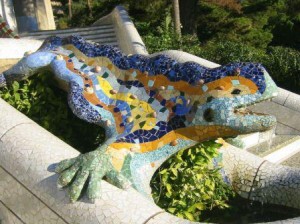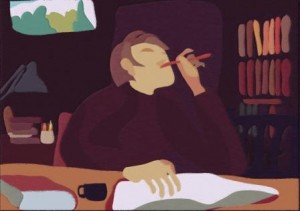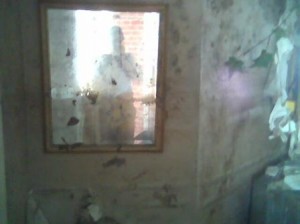‘It is by acts, and not by ideas, that people live.’Anatole France
I asked my youngest son what I should write on my blog today; he said ‘character research – where do they come from, how do you make them seem real?’
This surprised me – but led to an interesting train of thought.
It has to be said he has always had high E.Q. and was an excellent actor at school, so I should not have been startled at his focus in writing. He made me think about the various ways I could approach creating my characters, and the implications of these.
Observation
– the obvious source of behaviour. but it comes with several reservations.
There is the morality of my ‘using’ family and friends for a start: I could hurt people’s feelings; inadvertently divulge secrets or embarrass them. As for strangers and acquaintances, well, it’s not good to stare and note-making is a bit obvious ( my memory isn’t that good).
Syncretion
I could blend people together; a kind of character pic ‘n’ mix. There are gestures, tics and idioms of different people I could combine. If I make them diverse enough, I might avoid offending any one person.
That seems cowardly as a motivation, and the result likely to seem artificial without a great deal of care. Actual behaviour – now that’s another thing. Translating action I have seen from one person to illuminate a single aspect of my character – that appears more honest.
Invention
‘Just make it up’ – that feels like a valid way to get on with it and avoid procrastination too. Let the back of my mind do the work; watch what my characters do and say in my imagination and write it down.
I have to acknowledge the inevitable influence of what I’ve read ( not to mention seen in films and heard on the radio). I recognise there’s a danger of resorting to cliché and stereotype too. But it is all the more reason to read widely – and I find non-fiction and biographies have much for me to absorb.
I need to acknowledge that whatever approach I take, it is filtered through my perceptions.No matter how hard I might try to be a disinterested observer, it’s still me on the page in one way or another. This is where multiple personality is not a disorder.
I get to try out different selves, live more lives than one and let rip with my inner actress. The characters that live are those with most authenticity: they are a part of me. So I have to be honest and accept that the bitter, vengeful Celia in The Wedding Ghost is as much ‘me’ as the courageous Lorna in The Seal People of Scoresby Nab.
‘When I write a novel I’m writing about my own life; I’m writing a biography almost always. ‘





This is really interesting. I create characters by asking them questions and building up a complete portfolio. For example, I might find a photo that will be a trigger for a face and then the character develops from there. I always think you need to know them inside out including what is in their pockets. This way you can then understand exactly how they will react in any given situation. Thanks for the post though, made me think.
That was a quick response, Vanessa. Thank you.
I love your ‘what’s in their pockets’concept – I may have to steal it.
I am very glad to have stimulated some reflection – the topic certainly did for me.
Great stuff, KM. I myself have to wait for the characters to reveal themselves to me. I fI keep writing, they eventually come out and allow me to know them.
Thank you for commenting Candy.
You are in good company with that – I know Kate Mosse has to wait for her characters to emerge, for one.
Thought provoking post – and the thoughts it has provoked are that my main character has, like yours, aspects of my own personality but acting as I’d like to (am not brave/foolish/heroic/vindictive enough to) within the situations in the story.
It is the other characters, the baddies, mentors, sidekicks etc. where I really have fun with traits and tics to bring them to life. But there’s a fine line between interesting and caricature.
Hello and thanks for commenting Julienne.
I’m afraid that I am vindictive enough!
I agree there is a subtle but important distinction between memorable and unbelievable ‘baddies’ et cetera.
I’m with Candy – I have to wait for them, and inevitably their appearance, when it finally comes, turns any plot I had in mind into cinder and smoke. Pushy things, they are. I have tried defining characters before, but I have found that they inevitably morph in some way or other – usually in several or all ways – and if they don’t surprise me like that, they aren’t interesting enough anyway. Nice blog once again!
Good to read what you have to say, Jo. I’m definitely someone with a story in search of some characters. I must be honest and say that they are flat, shadowy entities until I get going on what they do and say – then I learn who they are. I’m like the Fates – I put them through the mill and see what they do!
Still, though, they are aspects of me.
I tend to look at my childhood, my interests and dreams as a kid (and a big kid!) and things kinda flow from there.
I also favour animals and monsters as supposed to humans. Not that I’m against us humans, but I find the non-human a we bit more interesting and love the ideal of personification. I blame The Muppets, Dr. Dolittle and a whole heap of others…:)
Aha – a fellow Muppet fan! Lovely to hear from you Rikin. The inner child is a great resource isn’t it? Thank you for taking the time to comment.
Really interesting post. I often use the book’s setting as a starting point for characters, and try to work out what kind of oddities an environment like that might spawn. I enjoy looking at the different ways people can be shaped by the same background, including those who are reacting against it.
After that, the characters develop their personalities by borrowing bits of my psyche, so I think I’m also in the ‘multiple personality’ camp. They continue to flesh themselves out as I write, and I know they have a life of their own once they’re capable of surprising me.
Delighted to hear from you, Frances.
I am also a great place fan – indeed I’d say Scoresby Nab, The Isle of Wythering and Selchester are character in my work. Very taken with your interest in the matrices that surround your characters.
Thank you for commenting – always appreciated.
I think in my earliest writing, the main character was very thinly-disguised me. Nowadays, I think my characters are a little more autonomous and unique, but they seem to come out of my need to understand a problem or solve an issue. I don’t develop them so much as I get to know them as I make notes about them and discover details about them, like that one has an older brother or another likes all things red. Hmm, having said that, I do have a little yellow dragon who wants to be a folk singer. So, still thinly-disguised me?
Thank you for commenting, Colleen. I am rather taken with your point about characters arising out of the writer’s desire to comprehend something. When all is said and done, that is a fundamental part of oneself, the wish to explore your own understanding.
Glad you passed by.
I think characterisation differs for me according to the story. I’ve always tried to completely invent characters, but for the book I’m writing at the moment, the central character came out of someone I was working with (though reinvented enough to not be directly recognisable). I saw Louise Rennison talk once and she actually uses the names of real teachers she had as a child – her books are more like amped-up autobiography.
I am finding that an evolutionary approach works best for me – plot a bit, write a bit, develop the characters a bit. My characters rarely do things to surprise or derail the plot though, except for one instance when I gave an evil character a stutter. By the end of the scene, my heart softened and I knew I would have to make him come good.
Nick.
Great to hear from you, Nick. I can relate to your concept of ‘evolving’ very well – this may in its itself give a more convincing story and characterisation. After all – we learn about real people bit by bit through what they say and do.
Thanks for commenting.
My characters just appear, I don’t know where they come from. When I’m observing others I tend to notice the feeling or impression that I get from them rather than the people themselves. I feel as if I notice an essence or quality about some people, something that sums up their entire world-view or personality in just one instant. It’s like a little spark that I take from them, and I place that spark in a story and it comes to life. A different person is born, a different character comes into the novel with unique looks and experiences and behaviours, but still possessing the original spark I wished to capture.
Where these sparks come from is essentially random. A conversation over dinner, a stranger on a bus. They are stored dormant in my mind for years and years and suddenly burst into life when the right story gives them space to germinate. I don’t over-think my character creation. I don’t create character lists or parameterize their good qualities, it doesn’t matter whether my MC is left handed or as slender as a birch twig or whatever. What matters is the life that he or she has and how much life I allow her to have in my story.
I agree with living other lives, though. I’ve been a runaway 11 year old, a single dad, a dead horse and a Martian civil servant among a few thousand others. I have to be careful that I’m not simply writing about my wishes, and instead my aim is to create environments and spaces large enough to allow my characters to breathe. It isn’t easy!
Welcome to my blog, Maya. I do appreciate you commenting.
Your idea about the essence or spark of a person is interesting – and rather more fundamental than mere outward appearance. All the best with your wide range of people & environments.